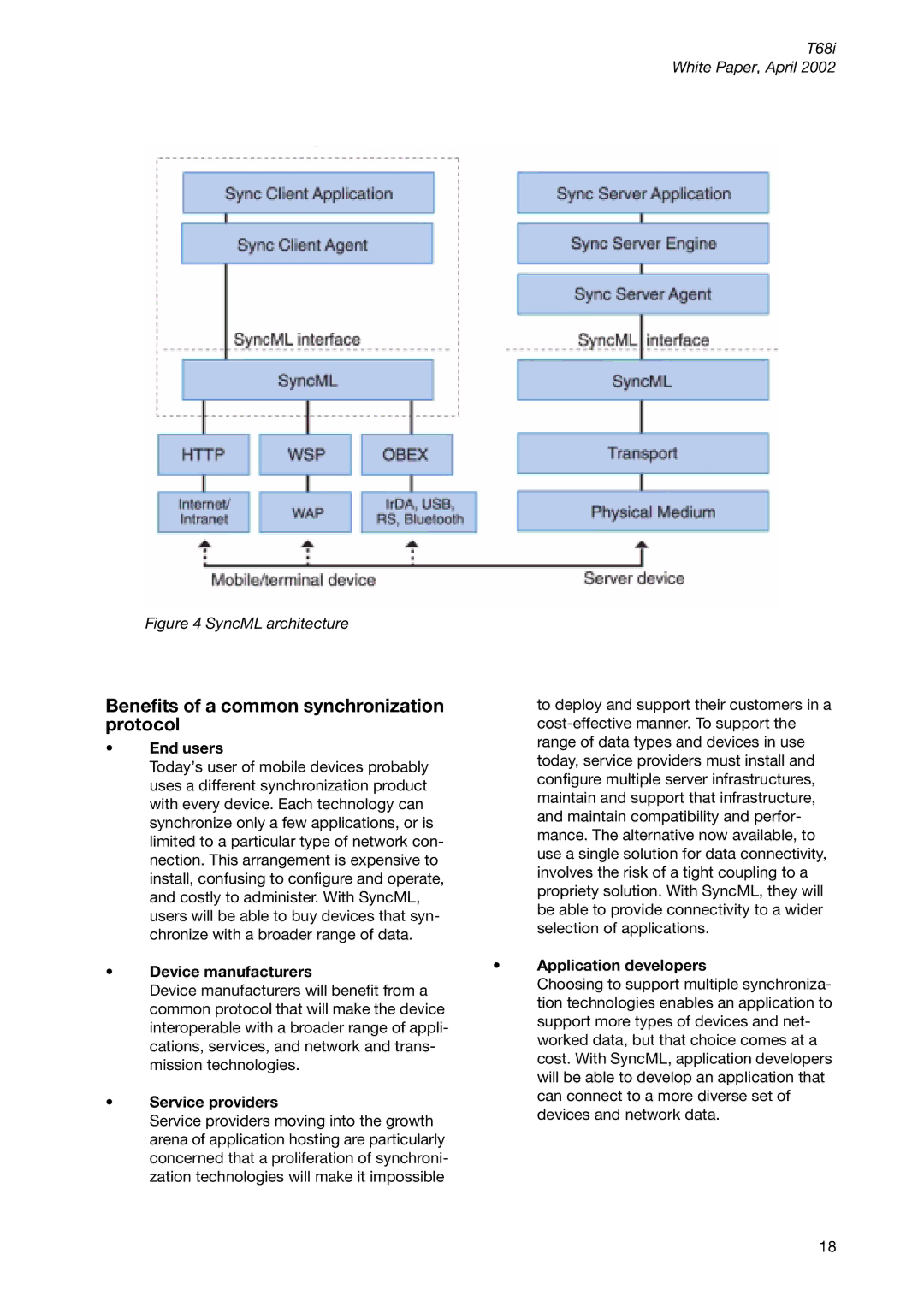
T68i
White Paper, April 2002
Figure 4 SyncML architecture
Benefits of a common synchronization |
| to deploy and support their customers in a | |
protocol |
| ||
• | End users |
| range of data types and devices in use |
| today, service providers must install and | ||
| Today’s user of mobile devices probably |
| |
|
| configure multiple server infrastructures, | |
| uses a different synchronization product |
| |
|
| maintain and support that infrastructure, | |
| with every device. Each technology can |
| |
|
| and maintain compatibility and perfor- | |
| synchronize only a few applications, or is |
| |
|
| mance. The alternative now available, to | |
| limited to a particular type of network con- |
| |
|
| use a single solution for data connectivity, | |
| nection. This arrangement is expensive to |
| |
|
| involves the risk of a tight coupling to a | |
| install, confusing to configure and operate, |
| |
|
| propriety solution. With SyncML, they will | |
| and costly to administer. With SyncML, |
| |
|
| be able to provide connectivity to a wider | |
| users will be able to buy devices that syn- |
| |
|
| selection of applications. | |
| chronize with a broader range of data. |
| |
|
|
| |
• | Device manufacturers | • | Application developers |
| Choosing to support multiple synchroniza- | ||
| Device manufacturers will benefit from a |
| |
|
| tion technologies enables an application to | |
| common protocol that will make the device |
| |
|
| support more types of devices and net- | |
| interoperable with a broader range of appli- |
| |
|
| worked data, but that choice comes at a | |
| cations, services, and network and trans- |
| |
|
| cost. With SyncML, application developers | |
| mission technologies. |
| |
|
| will be able to develop an application that | |
|
|
| |
• | Service providers |
| can connect to a more diverse set of |
|
| ||
Service providers moving into the growth | devices and network data. |
| |
arena of application hosting are particularly |
|
concerned that a proliferation of synchroni- |
|
zation technologies will make it impossible |
|
18
